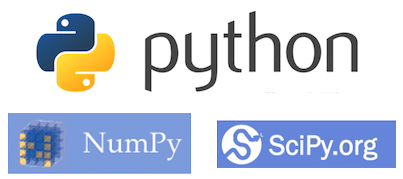What is NUMPY & SCIPY
Python Numpy
One of the most important reasons for Python’s popularity today is its functionality in computational Sciences. Python, a high-level programming language, has this functionality, enabling the user to easily perform complex large-scale calculations in lower-level programming languages (C, C++, Fortran, etc.), providing a comparable performance to the user (MATLAB, etc.).) can perform. Python actually owes this functionality to plugins called modules, packages or libraries. The most famous of these packages are the numpy and Scipy libraries, which comprise the scope of our series. Numpy is a library that is generally specialized for array/vector/matrix calculations, making it easy to process large sets of data. Scipy includes functions for expressing frequently used mathematical routines and physical problems in a computer environment. In addition, in order to visualize the data processed and obtained as a result, the Matplotlib library will try to provide practical information.

Examples of the articles are code running in Python 3.3, and the numpy 1.8 and Scipy 0.13 libraries are compatible. However, we believe that using any Python 3x version with the relevant libraries will not be a problem. For instructions on installing packages http://www.scipy.org you can browse the site. For the convenience of Windows users, binary files can be prepared and distributed free of charge by third parties. Among them, you can find many other plugins http://www.lfd.uci.edu/~gohlke/pythonlibs can be recommended.
The scipy library uses numpy sequences in the background. That’s why in our classes numpy will be told and then Scipy will be told. Within the scope of Numpy, the following topics will be discussed.
- Creating an array
- Vectorization and slicing
- Matrices and simple linear algebra
- Data files
Within the scope of scipy, the following topics will be followed.
- Linear algebra
- Interpolation and curve fitting
- Numerical integration and differentiation
- Fourier transform
- Special functions
- Physical quantities and constants
- Symbolic mathematics
- Read and write files
